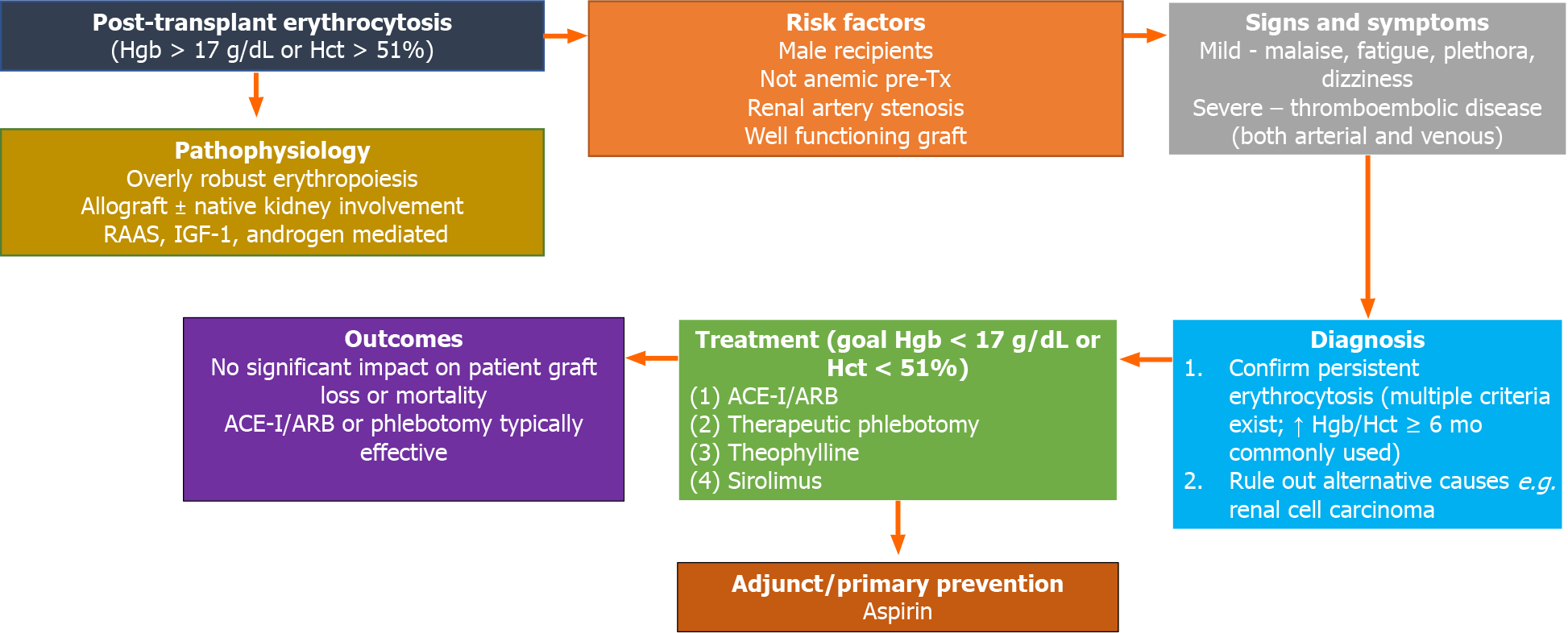Copyright
©The Author(s) 2021.
World J Transplant. Jun 18, 2021; 11(6): 220-230
Published online Jun 18, 2021. doi: 10.5500/wjt.v11.i6.220
Published online Jun 18, 2021. doi: 10.5500/wjt.v11.i6.220
Figure 1 Post-transplant erythrocytosis.
Post-transplant erythrocytosis (PTE) is a complication after transplant due to overly robust erythroid production from the allograft plus/minus native kidneys. Typically, the disease is mild as it is recognized early with laboratory screening. Accurate diagnosis is key to not miss renal cell carcinoma. Angiotensin converting enzyme inhibitors/angiotensin receptor blocker or phlebotomy are commonly effective treatments. Aspirin is often used for primary prevention though no studies to date support its use. PTE is not associated with graft loss or patient mortality. Hgb: Hemoglobin; Hct: Hematocrit; RAAS: Renin-angiotensin-aldosterone system; IGF: Insulin growth factor; Tx: Transplant; ACE-I: Angiotensin converting enzyme inhibitors; ARB: Angiotensin receptor blocker.
- Citation: Alzoubi B, Kharel A, Machhi R, Aziz F, Swanson KJ, Parajuli S. Post-transplant erythrocytosis after kidney transplantation: A review. World J Transplant 2021; 11(6): 220-230
- URL: https://www.wjgnet.com/2220-3230/full/v11/i6/220.htm
- DOI: https://dx.doi.org/10.5500/wjt.v11.i6.220









